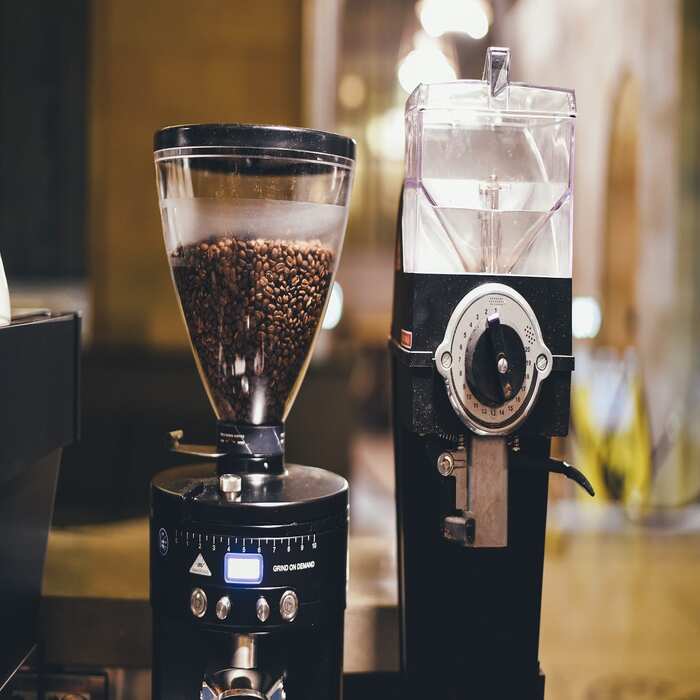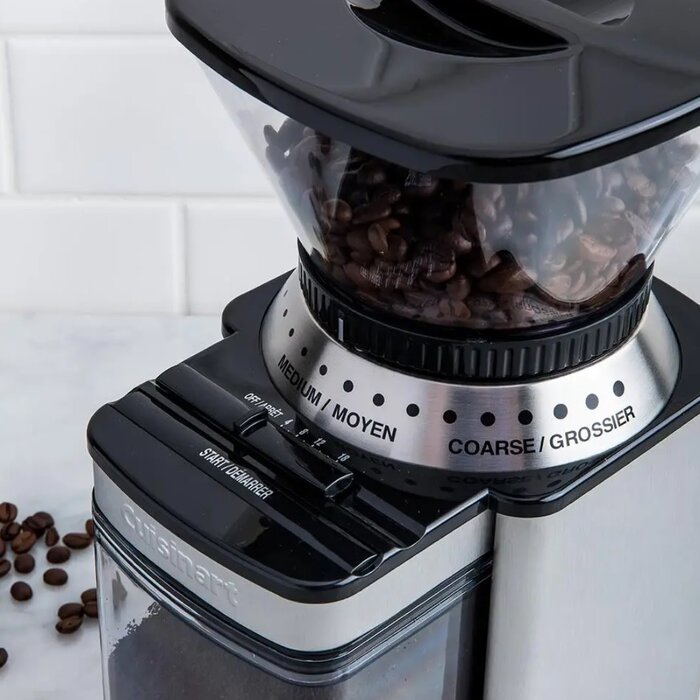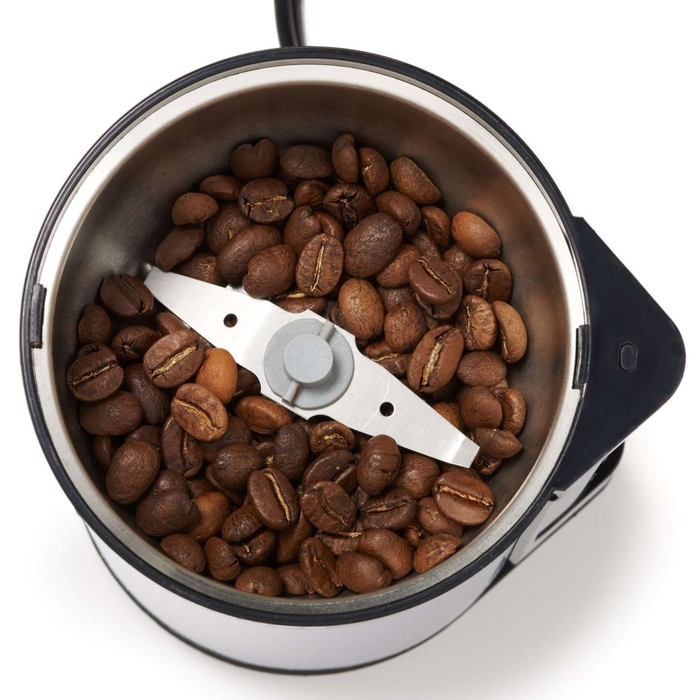Introduction
For coffee enthusiasts, the pursuit of the perfect cup is a journey filled with nuanced decisions, and the importance of a quality grind cannot be overstated. The humble coffee grinder, often overlooked, plays a pivotal role in extracting the optimal flavor from your beans. Choosing the right grinder can be the difference between a mediocre morning brew and a truly exceptional coffee experience. Two primary categories dominate the market: coffee grinder burr vs blade. This article delves into the intricacies of each type, providing a comprehensive comparison to guide you towards the grinder that best suits your needs and elevates your coffee ritual.
Burr Grinders: The Gold Standard for Precision and Consistency
How Burr Grinders Work
Burr grinders, unlike their blade counterparts, don’t pulverize beans with brute force. Instead, they utilize two abrasive surfaces, called burrs, to meticulously grind the beans. These burrs are typically conical or flat and housed within a chamber. As beans enter the chamber, they are channeled between the burrs. The distance between these burrs, adjustable by the user, determines the fineness of the grind. This mechanism ensures a uniform particle size, a crucial factor in brewing a balanced and flavorful cup of coffee.
Advantages of Burr Grinders
Burr grinders offer several advantages that have cemented their position as the preferred choice for coffee aficionados. Firstly, their ability to produce a consistent grind size is unmatched. This consistency translates to a more even extraction during brewing, resulting in a coffee that is balanced, flavorful, and free from bitterness or sourness caused by uneven extraction. Secondly, burr grinders offer a wide range of grind size settings, catering to various brewing methods, from coarse grinds for French press to fine grinds for espresso. This versatility allows coffee lovers to experiment with different brewing techniques and discover their preferred taste profiles. Lastly, burr grinders are known for their durability. Their robust construction, often featuring steel or ceramic burrs, ensures longevity and reliable performance over time.

Flavor Extraction: The Essence of a Good Cup
Beyond consistency, the type of grinder you choose directly influences the flavor extraction process during brewing.
Burr Grinders: Optimizing Flavor Extraction
The consistent grind size produced by burr grinders ensures that all coffee grounds come into contact with water evenly. This uniformity is key to maximizing flavor extraction during brewing. When all particles are roughly the same size, they extract at a similar rate. This even extraction prevents both over-extraction and under-extraction, resulting in a balanced and nuanced cup of coffee.
Burr grinders allow you to taste the true potential of your coffee beans. The ability to fine-tune the grind size empowers you to experiment with different brewing methods and discover flavor profiles tailored to your palate. Whether you prefer the bright acidity of a light roast or the rich chocolate notes of a dark roast, a burr grinder ensures you extract the best flavors from your beans.
Blade Grinders: The Inconsistent Brew
Conversely, the inconsistent grind produced by blade grinders leads to uneven flavor extraction. The fine particles, due to their larger surface area, over-extract, releasing bitter compounds into the brew. Simultaneously, the larger chunks remain under-extracted, contributing to a weak and sour taste. This combination of over-extraction and under-extraction creates an unbalanced and often unpleasant flavor profile.
While some may argue that the inconsistent grind can add complexity to the cup, it often manifests as muddled flavors rather than desirable nuances. The lack of control over the grind size with blade grinders makes it challenging to achieve a consistently flavorful cup, particularly for those who appreciate the subtle notes and balanced profiles of specialty coffee.
Blade Grinders: The Budget-Friendly Option with Limitations
How Blade Grinders Work
Blade grinders operate on a simpler principle than their burr counterparts. They utilize a rapidly spinning blade, akin to a propeller, to chop the coffee beans. This blade, typically positioned at the bottom of a small chamber, whirls at high speeds, pulverizing the beans into particles of varying sizes. The longer the grinder runs, the finer the grind becomes. However, this method lacks the precision and control of burr grinders.
Disadvantages of Blade Grinders
While blade grinders are generally more affordable than burr grinders, their limitations become apparent in the cup. The primary drawback lies in their inability to produce a consistent grind size. The blade’s chaotic chopping motion results in a mix of fine particles and larger chunks. This inconsistency leads to uneven extraction during brewing, yielding a coffee that can taste both bitter and sour simultaneously. Moreover, the heat generated by the blade during grinding can negatively impact the flavor of the coffee. The high temperatures can scorch the beans, imparting a burnt or bitter taste to the final brew.

Delving Deeper: A Comprehensive Comparison
To further illustrate the differences between coffee grinder burr vs blade, let’s delve into a detailed comparison across various aspects:
Grind Consistency
Burr Grinders: Burr grinders excel in producing a uniform grind size, ensuring even extraction and a balanced flavor profile. The adjustable burr settings allow for precise control over the grind size, catering to a wide range of brewing methods.
Blade Grinders: Blade grinders struggle to achieve grind consistency due to their chaotic chopping mechanism. The resulting mix of particle sizes leads to uneven extraction, often producing a coffee that is both bitter and sour.
Grind Size Control
Burr Grinders: Burr grinders offer a wide range of grind size settings, typically adjustable with calibrated dials or stepped adjustments. This level of control allows for precise tailoring of the grind to specific brewing methods, from coarse for French press to fine for espresso.
Blade Grinders: Blade grinders offer limited control over grind size. The fineness of the grind is primarily determined by the duration of grinding. However, achieving a specific grind size consistently is challenging due to the lack of precise adjustments.
Heat Generation
Burr Grinders: Burr grinders generate minimal heat during grinding due to their slower rotation speeds and efficient grinding mechanism. This minimizes the risk of scorching the beans and preserving the delicate flavors of the coffee.
Blade Grinders: Blade grinders generate significant heat during operation due to the high speeds of the spinning blade. This heat can scorch the coffee beans, imparting a burnt or bitter flavor to the final brew, particularly if the grinder is run for extended periods.
Noise Level
Burr Grinders: Burr grinders, particularly those with conical burrs, tend to operate quieter than blade grinders. The grinding process is smoother and involves less high-pitched noise, making them suitable for use in quiet environments.
Blade Grinders: Blade grinders can be quite noisy, especially during operation. The high-speed spinning blade generates a high-pitched whirring sound that can be disruptive, especially in the early morning.
Price
Burr Grinders: Burr grinders are generally more expensive than blade grinders, with prices varying depending on factors such as burr type, build quality, and features. However, their superior performance and longevity often justify the higher investment for serious coffee enthusiasts.
Blade Grinders: Blade grinders are the more budget-friendly option, making them an attractive choice for casual coffee drinkers or those on a tight budget. However, their limitations in grind consistency and potential for heat damage should be considered.

Conclusion: Choosing the Right Grinder for Your Coffee Journey
The choice between a coffee grinder burr vs blade ultimately hinges on individual needs, priorities, and coffee aspirations.
For those seeking the purest coffee experience, where flavor reigns supreme, a burr grinder is the undisputed champion. Its ability to produce a consistent grind, coupled with its precise control over grind size, unlocks the full potential of your coffee beans.
Blade grinders, while more budget-friendly, come with inherent limitations in grind consistency and potential for heat damage. They may suffice for casual coffee drinkers, but their shortcomings become readily apparent when seeking a truly exceptional cup.
Investing in a quality burr grinder is an investment in your coffee journey, one that promises years of flavorful and aromatic brews. It’s a decision that will elevate your coffee ritual from mundane to extraordinary. So, embark on this flavorful adventure with the right grinder by your side, and savor the rich tapestry of flavors that a perfectly brewed cup of coffee has to offer.
